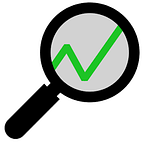Stock screeners are an invaluable tool for professional traders. In just a few clicks, you can set up filters according to your trading strategy and immediately get a curated list of stocks that match your criteria. You save a lot of time and can then directly move on to researching the companies that you found.
There are many stock screeners available online, which can be a bit of a challenge. If you’re not sure how to go about picking the best option for your trading style and budget, this post will show you how to choose a stock screener without wasting too much time comparing options.
How to Choose a Stock Screener: Here’s What You Should Look for
#1 The essential screening features
There are a number of must-have features you should find in a stock screener before you decide to go with it.
For starters, good screeners have a large database of stocks — you don’t want to rely on a screener that misses stocks that present potential opportunities.
Next, you need timely data, meaning it’s either in real-time or with a delay of a few minutes. After all, you don’t want to choose stocks based on data that’s already obsolete.
An effective stock screener will also have a powerful screening engine that can pull a list of stocks that match your criteria in moments. Speaking of criteria, you should be able to add multiple filters to get a narrowed-down and accurate list of stocks. These filters should include technical data, fundamental data, indicators like sales, price, volume, change, P/E, gap, volatility, and many more.
Other features you should look for are:
- Saving screens
- Creating hypothetical portfolios
- Setting up alerts
- Data auto-refresh
- Exporting data
#2 The data that you’ll need for your trading strategies and setups
Next, you have to determine what data and indicators you need for your trading style, strategies, and setups. From there, you can shortlist stock screeners that do provide the information you need.
To illustrate, day traders typically need real-time data, so they need a stock screener that provides that. Likewise, a swing trader will have to look at historical data to try to predict future market swings, so a stock screener that can’t provide that won’t be as useful as others can be.
#3 A Well-Designed UI
The user interface matters a lot in software tools. You should look for a stock screener with a user experience that you’ll find to be quick and comfortable. You want to be able to set up your filters and get a list of stocks in a short period of time, no longer than a couple of minutes. The data on your screen should be clear and uncluttered.
A nice-to-have feature is the ability to customize your screener’s layouts and sort the data the way you want it to be displayed. Even better is the option to hide information that you don’t need.
To check the UI of a stock screener, a quick look at its website and a few YouTube videos will give you a good idea of what it’s like. Of course, you can sign up for a trial account and test it for yourself.
#4 The pricing
Most stock screeners have a free version that includes the core screening features. However, you’ll often have to put up with ads that might be irritating. To unlock the full power of a stock screener and use it ad-free, most of the time you will need to subscribe to the paid version.
If your trading platform already includes a built-in stock screener, and it happens to be a good match for your needs, then you’re in luck: you won’t have to pay an extra subscription fee. If not, then you need to compare the pricing plans of the stock screeners you’re interested in and determine how much value you’ll get from each of them. Naturally, the stock screeners with the most advanced screening capabilities will cost more than the others.
Make sure to consider the potential ROI you’ll get for the monthly or annual cost. You don’t want to pay for a tool only to use the bare minimum of its capabilities.
#5 The other tools available
Some stock screeners are part of bigger platforms that offer other tools as well. For instance, TradingView is primarily a charting platform that has a powerful built-in screener. So you might sign up for a stock screener and gain access to other useful trading tools such as a trading simulator or a chat room.
You can even find trading platforms where you can consult a built-in stock screener then seamlessly transition to making trades, as I am going to show you in one of my recommendations.
Overall, you need to find the stock screener with the best combination of screening and other trading features for a price that’s affordable for you. Consulting online reviews will be helpful for shortlisting stock screeners down to a handful. From there, sign up for free trials and figure out which one you like the most.
Closing Thoughts
Granted, finding the best stock screener for your needs, budget, and personal preferences will take a bit of time. But with the criteria we covered in this post, that processing should take much less time.
If you have any thoughts to share or a question to ask, we’d love to hear from you. Write us a comment below and we’ll get back to you shortly. Thank you for reading!
